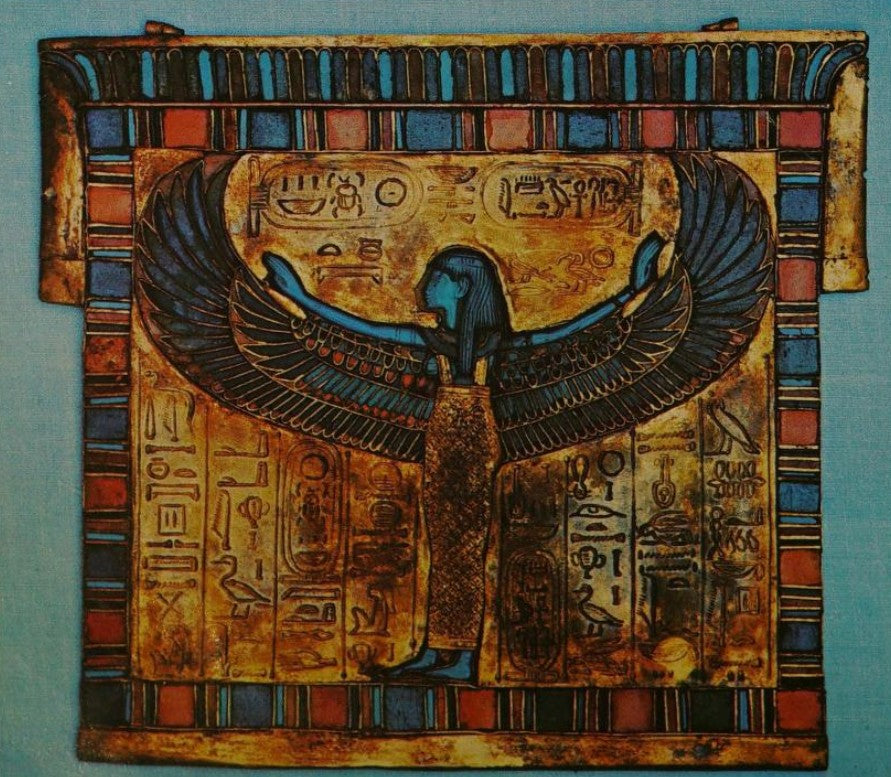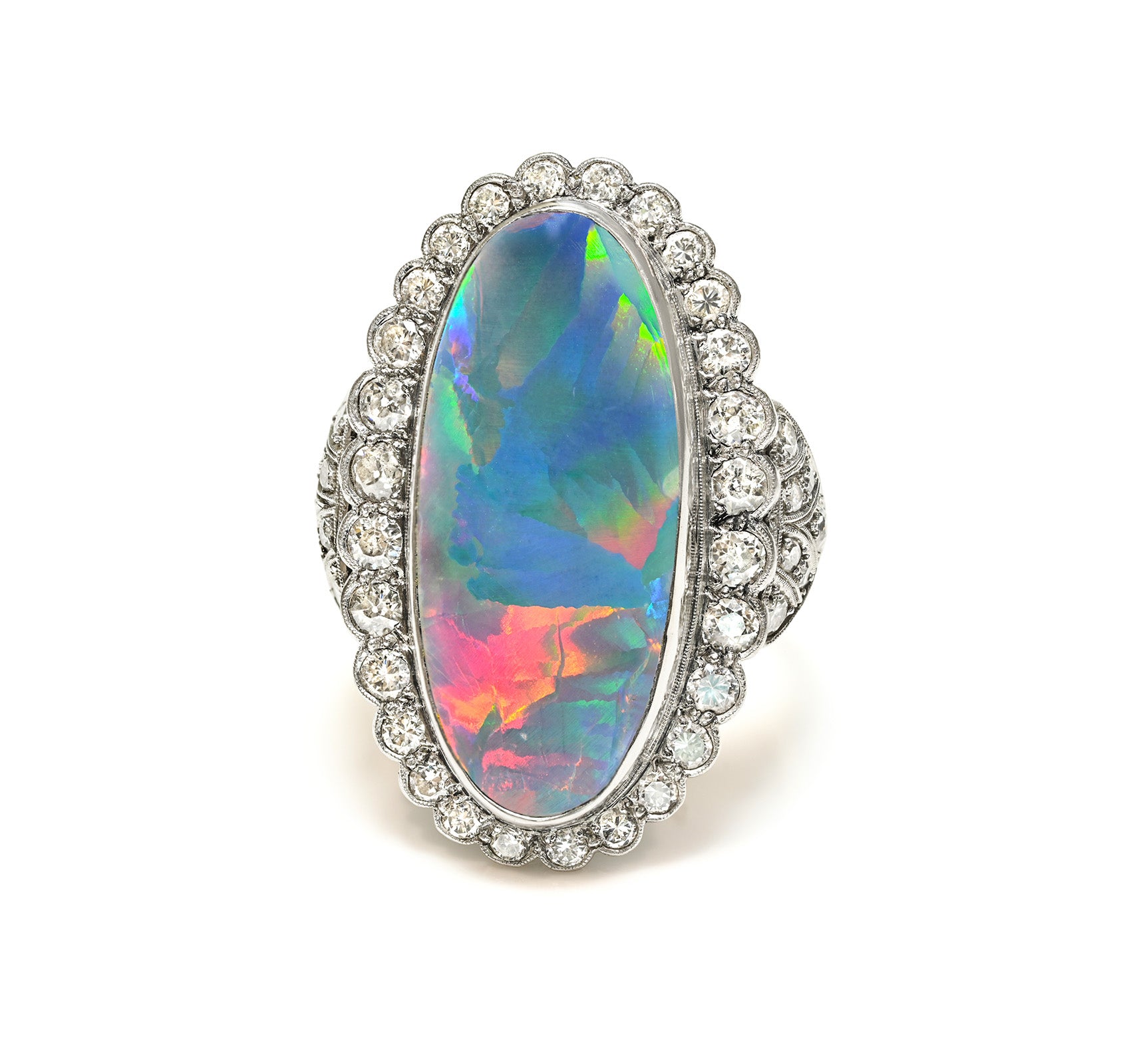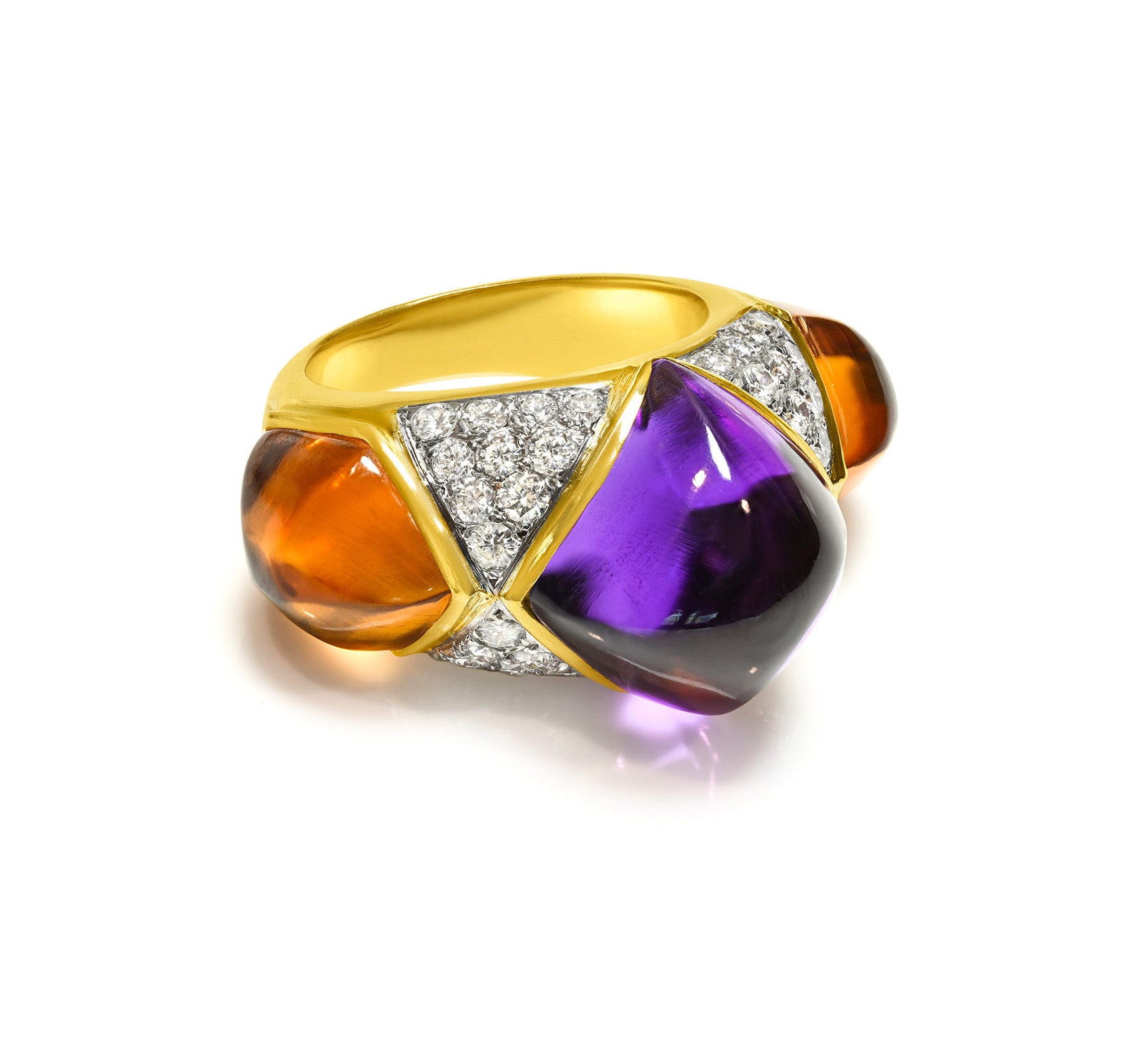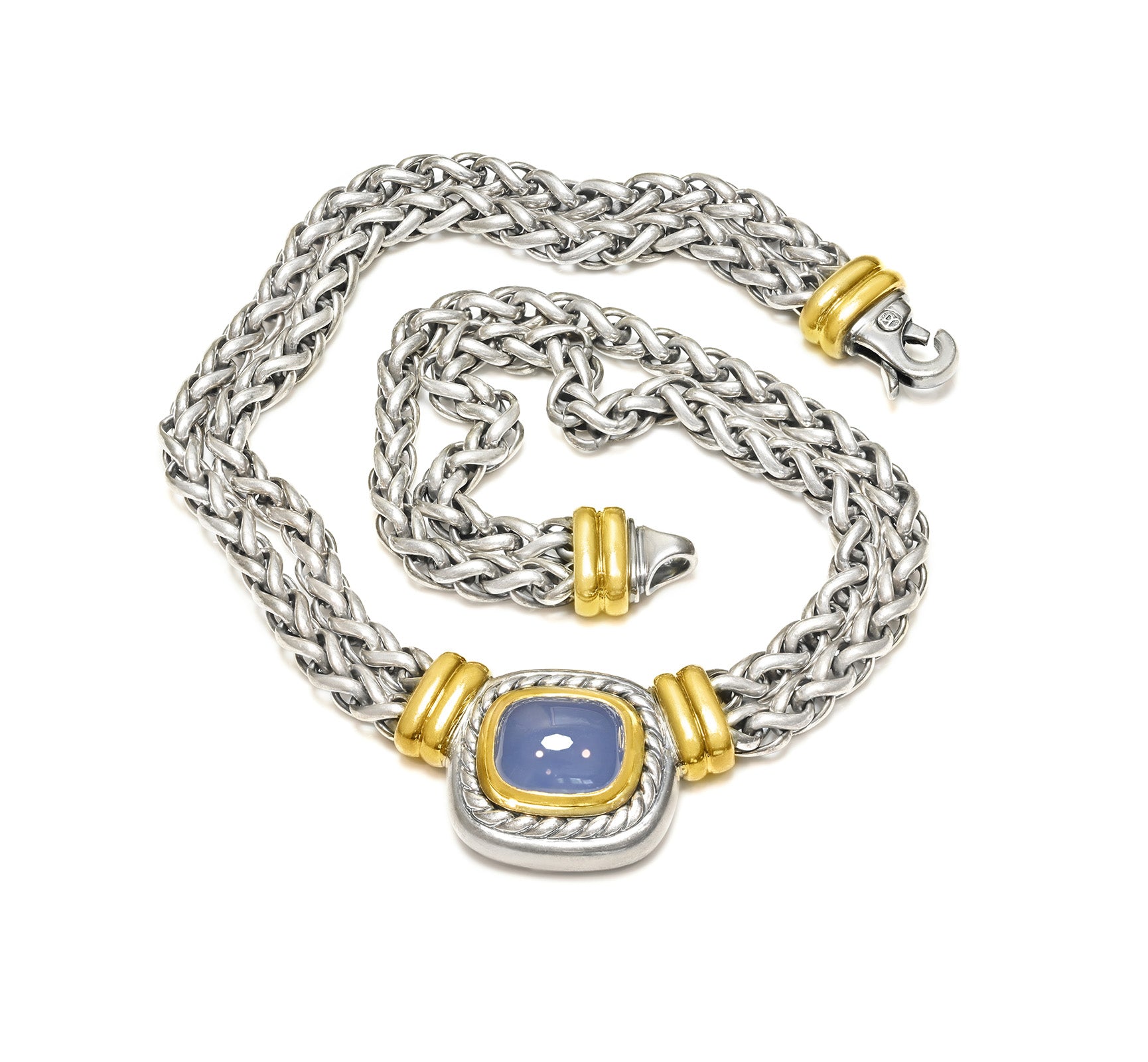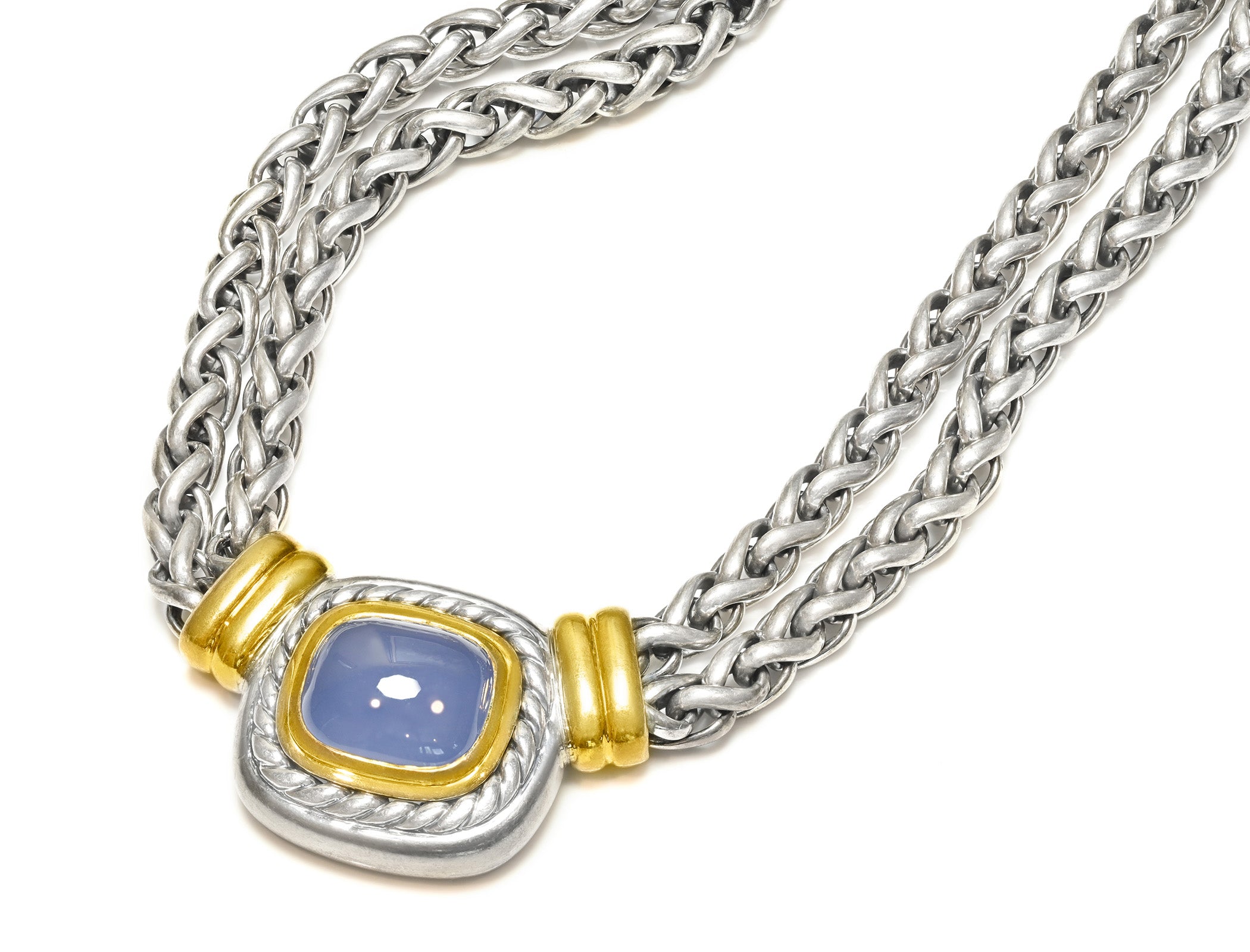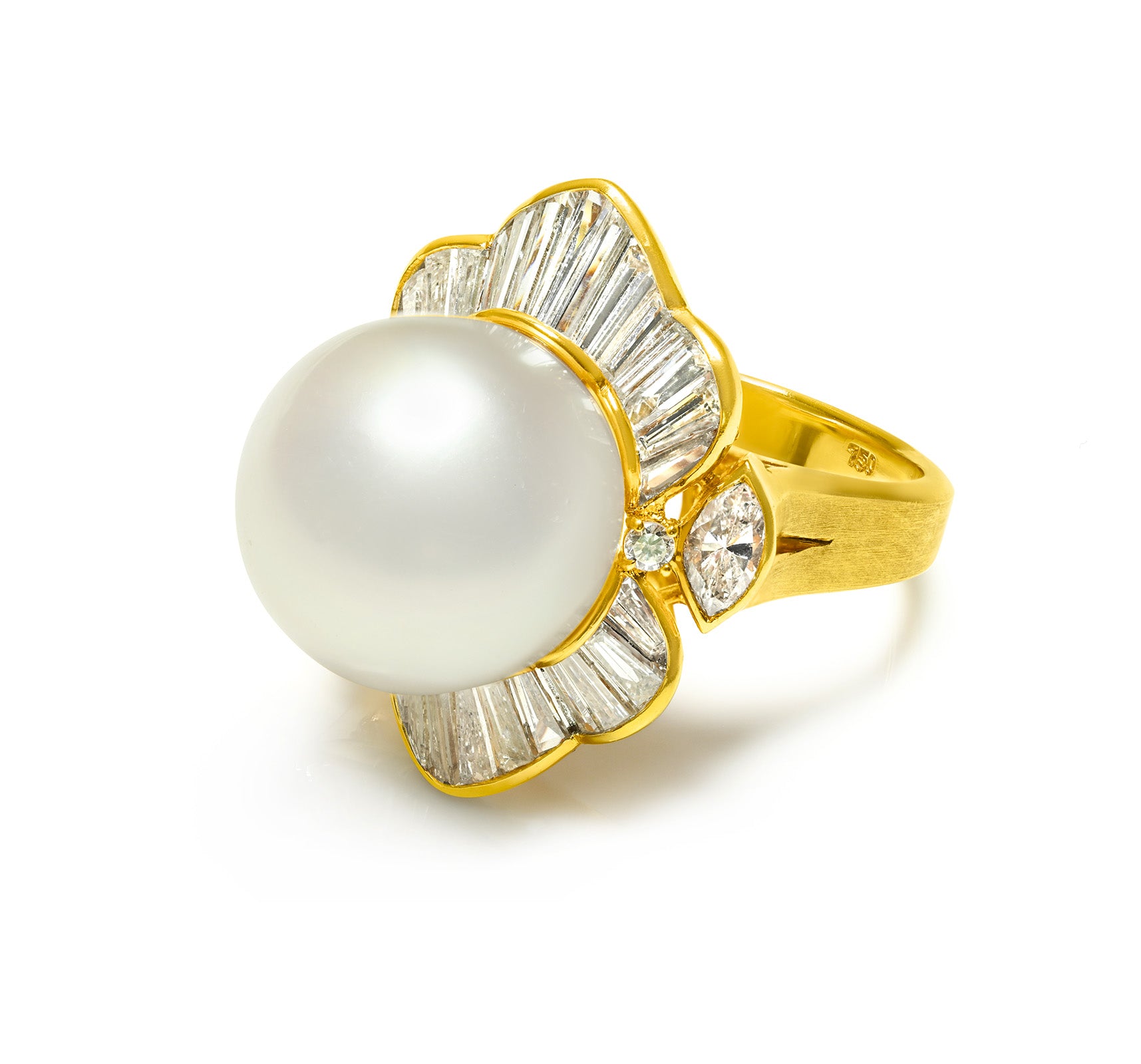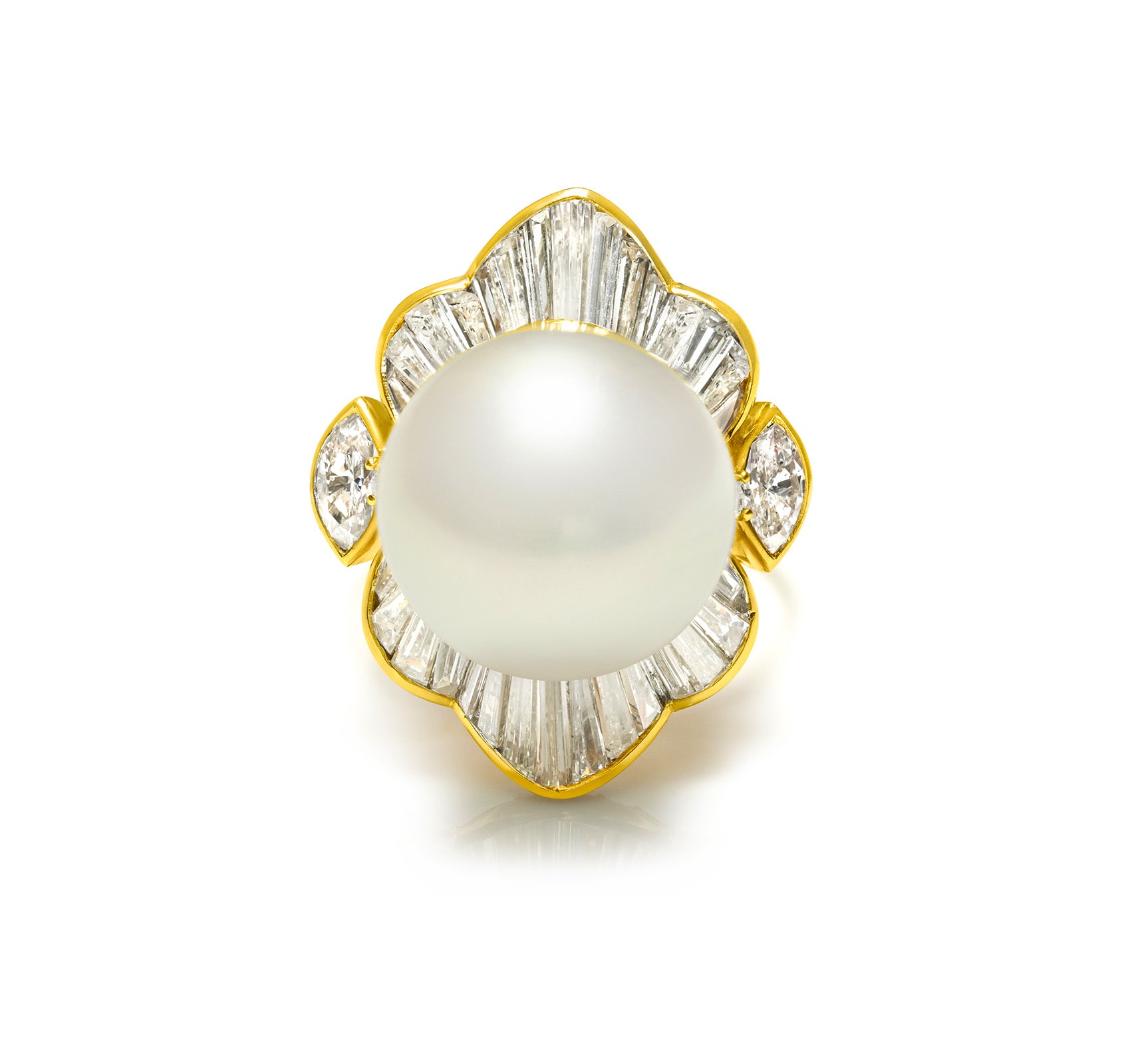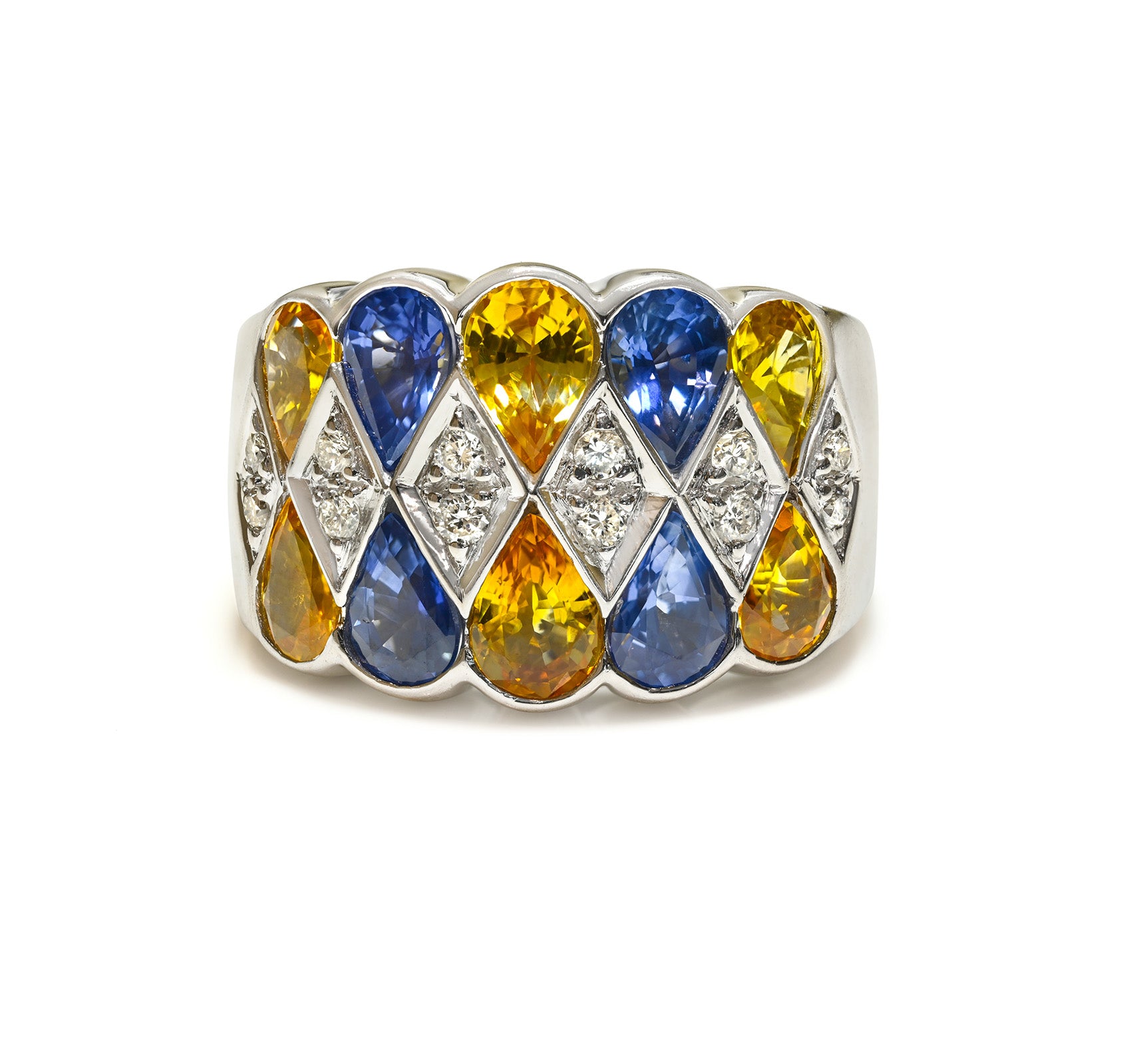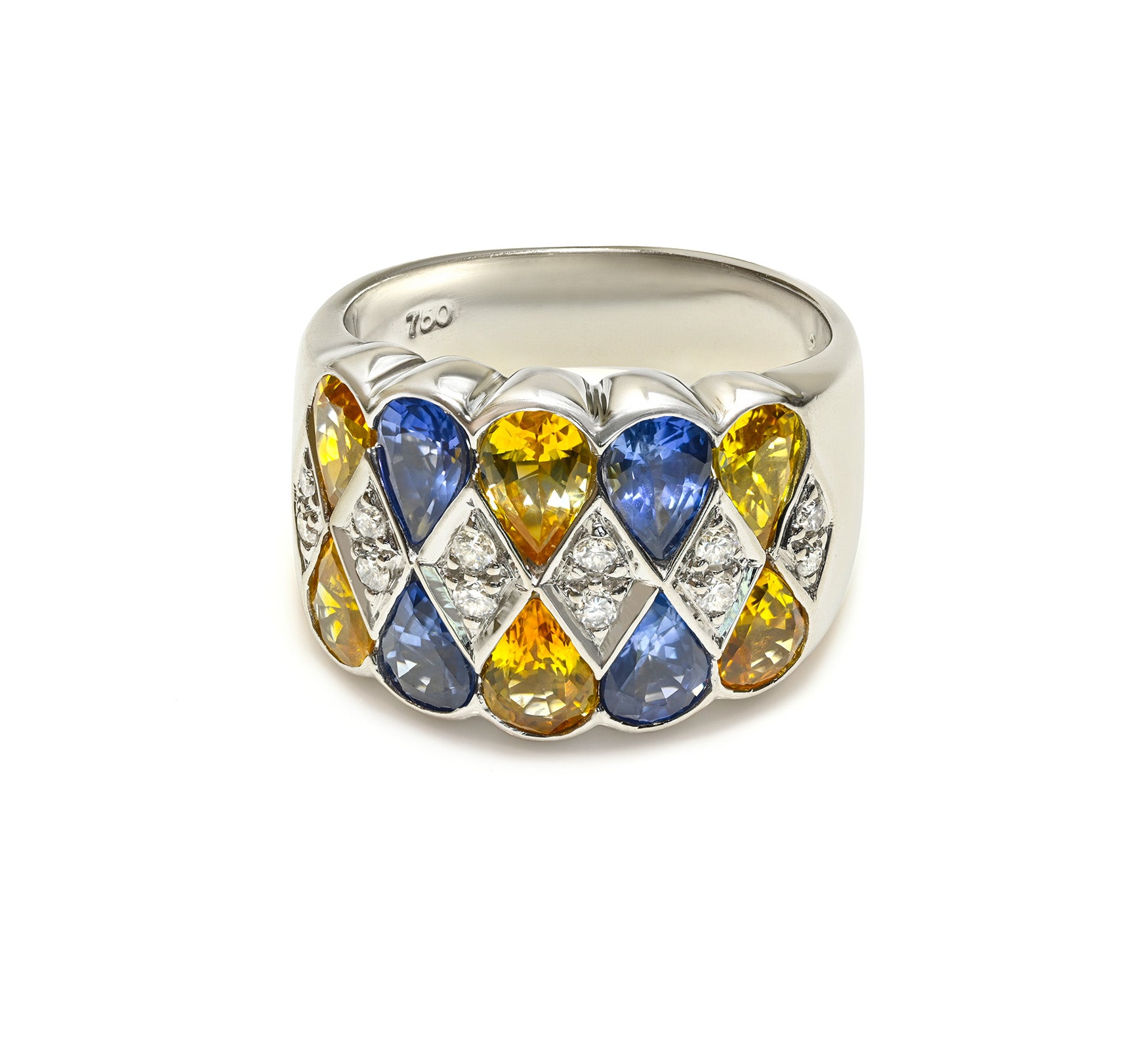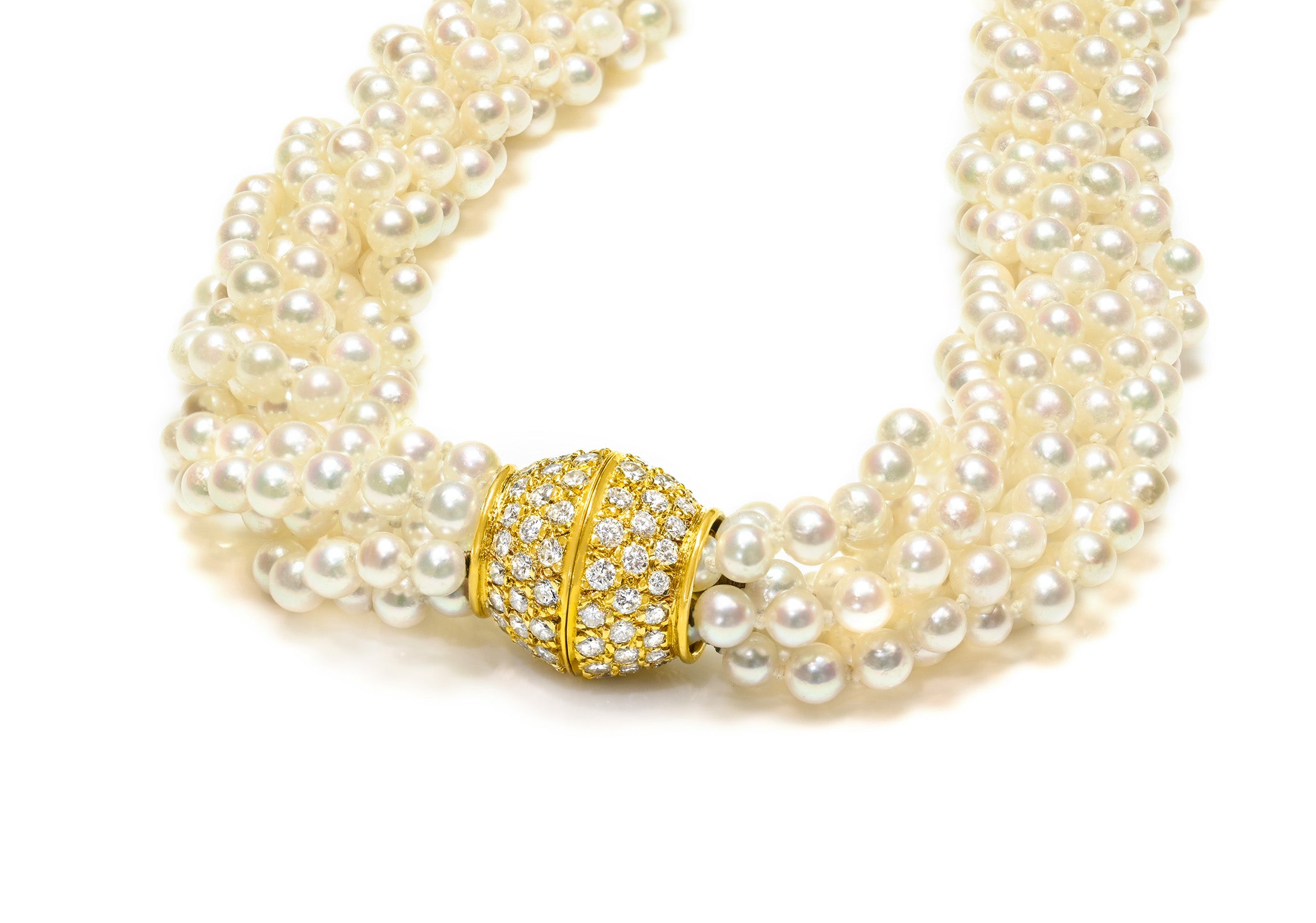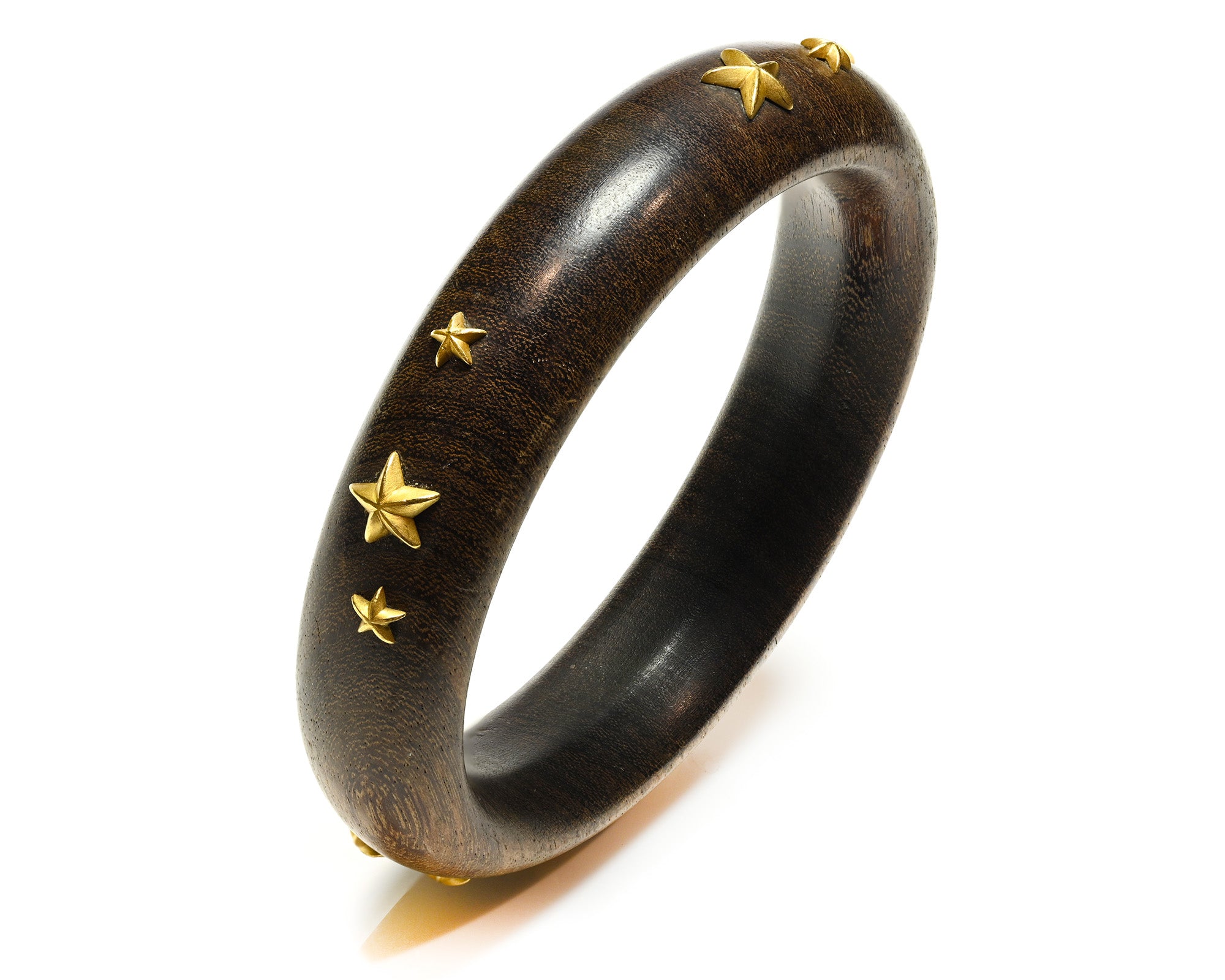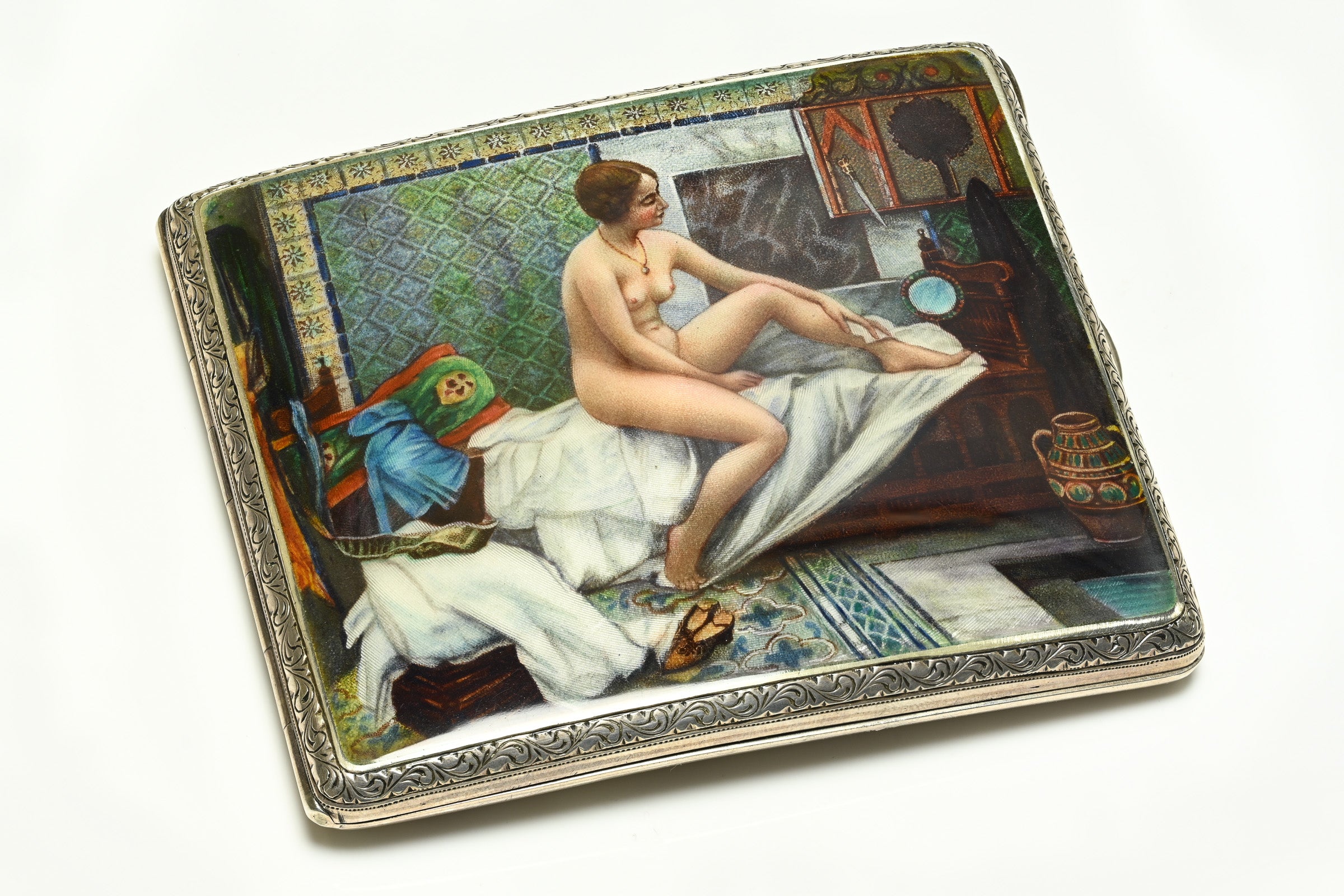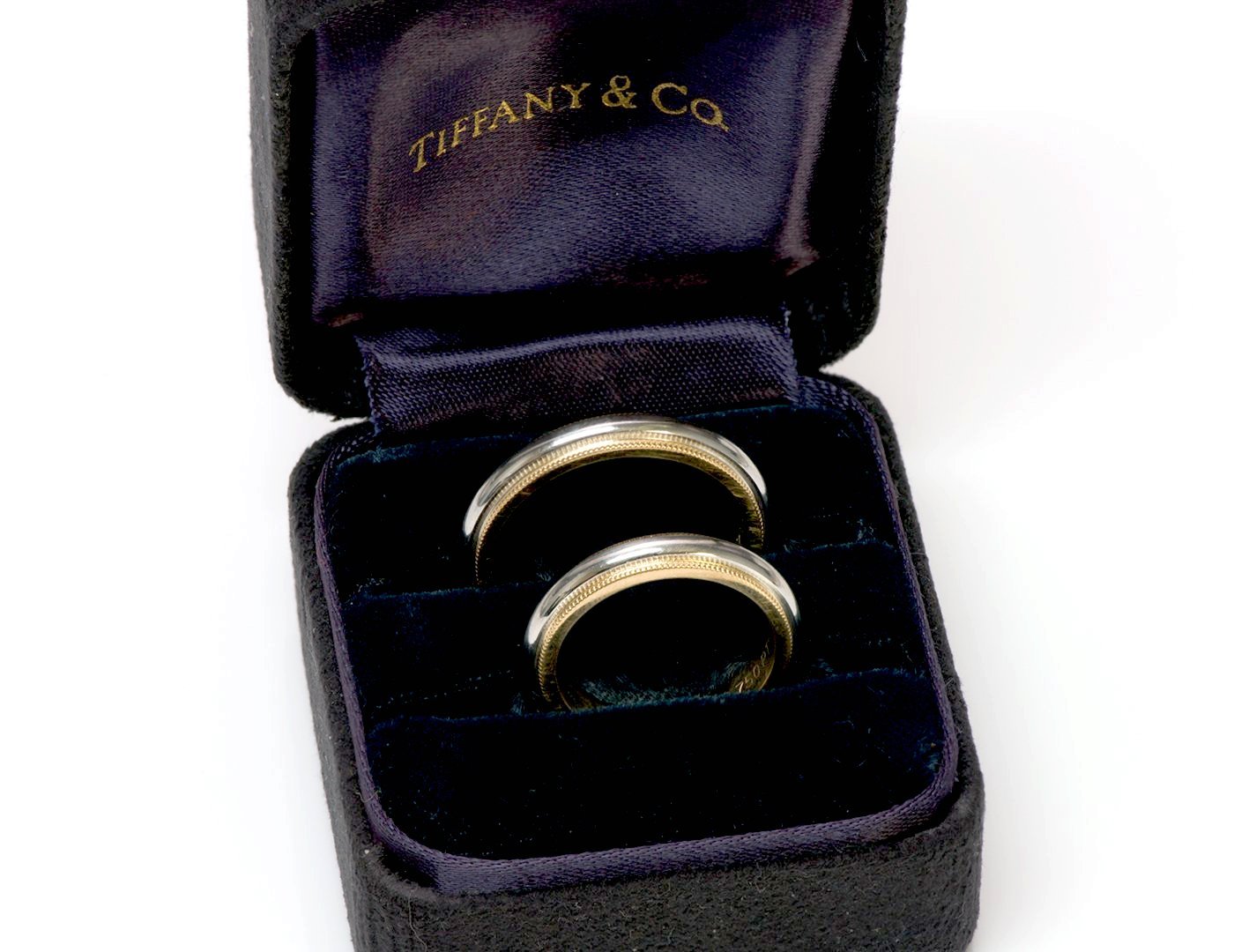
The Language of Love: Wedding Jewelry Across the World
Wedding jewelry is far more than a dazzling display of precious metals and gemstones. Across continents and centuries, it has served as a profound symbol of love, commitment, and cultural identity.
More than a simple accessory, wedding jewelry represents a visual language of heritage and emotion—marking one of life’s most significant transitions.
As outlined in "With This Ring: The Ultimate Guide to Wedding Jewelry" by Penny Proddow and Marion Fasel, the history of wedding adornment mirrors the evolution of human civilization itself.
Through rings, necklaces, crowns, and bracelets, societies have not only celebrated unions but also embedded their spiritual beliefs, social structures, and family traditions into these objects of beauty.
 Tiffany & Co. Platinum 18K Gold Milgrain Wedding Band Ring Set - DSF Antique Jewelry
Tiffany & Co. Platinum 18K Gold Milgrain Wedding Band Ring Set - DSF Antique Jewelry
Ancient Beginnings: The First Wedding Rings
The origins of wedding jewelry date back thousands of years, rooted in the earliest civilizations. Archaeological discoveries suggest that by 3000 BCE, ancient Egyptians were already fashioning wedding rings from braided reeds harvested along the Nile.
These symbolic bands were worn on the fourth finger of the left hand—a placement linked to the "vena amoris," or “vein of love,” believed to connect directly to the heart. Remarkably, this romantic notion endures in many cultures to this day.

These rings were more than ornamental; they were sacred. Couples were often buried with them, underscoring a belief in an eternal bond that extended into the afterlife.
In Mesopotamia, royal weddings featured entire suites of bridal jewelry, including headdresses, earrings, necklaces, and armlets—crafted from gold and lapis lazuli. These sets conveyed power, piety, and political alliance.
Cuneiform tablets from the Royal Cemetery of Ur reveal that such adornments played a central role in ceremonies, making them some of the earliest recorded instances of jewelry used specifically for matrimonial rites.

The Classical World: Rings as Contracts and Symbols
Greek and Etruscan societies (circa 700–300 BCE) transformed rings into symbols of legal and emotional contracts.
The famed Hercules knot—representing strength and unity—was commonly featured in jewelry designs. The Greeks also introduced the concept of a betrothal ring, a precursor to the modern engagement ring, which was presented before the wedding ceremony itself.

The Romans solidified many of these traditions. Early in the Republic, iron rings were gifted to brides, symbolizing durability and restraint. Over time, wealthier citizens adopted gold, and engraving personal messages, dates, or names into wedding bands became fashionable.
Roman law recognized the ring as a legal emblem of marital union, ensuring its widespread adoption across the empire and eventually, medieval Europe.
Another distinct Roman practice was the key ring, often made of bronze or iron. These rings, worn by brides, symbolized access to the husband's home and the responsibility of managing the household. This tradition inspired later European customs, including Saxon brides receiving both a key ring and actual house keys upon marriage.
Medieval and Renaissance Europe: Gems, Messages, and Meaning
By the Middle Ages, wedding rings had evolved into more ornate expressions of devotion, frequently adorned with gemstones. Each gem was imbued with symbolic meaning: rubies for passion, emeralds for hope, sapphires for wisdom, and diamonds for fidelity. Diamonds, when present, were often shaped like pyramids due to the rudimentary gem-cutting tools of the time.
Gimmal rings, highly popular between the 15th and 17th centuries, were composed of interlocking bands. During the engagement period, each partner wore one part. At the wedding, the rings were joined together and worn by the bride, physically embodying the union of two lives into one.
Many of these rings included inscriptions, such as the Latin phrase "Quod Deus coniunxit homo non separet” ("What God has joined together, let no man put asunder").

Jewish ceremonial rings from 16th-century Italy and Germany stood out for their architectural and symbolic complexity.
Featuring miniature buildings—often shaped like temples or houses—mounted on broad gold bands, these rings were engraved with blessings or Torah verses. Though too large for daily wear, they were used in wedding ceremonies and later preserved as sacred family heirlooms or synagogue treasures.

One of the most enduring wedding ring designs is the Irish Claddagh ring, which features two hands clasping a crowned heart. Though its origins trace back to 17th-century Italy, the motif gained its iconic name and significance in 18th-century Claddagh, a fishing village near Galway.
Traditionally worn as engagement or wedding rings, Claddagh rings were often inscribed with the couple’s names and passed down as cherished heirlooms from mother to daughter, preserving both personal and regional legacy.
The Rise of Diamond Engagement Rings
By the 18th century, diamond engagement rings had become fashionable among European nobility, admired for their durability, brilliance, and symbolism of fidelity. The discovery of diamond deposits in Brazil ensured a steady gem supply, while royalty and aristocrats began favoring refined diamond rings alongside their more extravagant jewelry collections.
Engagement rings from this period were often delicate in design—featuring a central diamond flanked by smaller stones, set in silver atop a gold band. The pairing of an engagement ring with a separate wedding band also took root during this era.
Queen Charlotte of England, famously dubbed the "Queen of Diamonds," helped establish the custom by wearing a diamond band alongside her engagement ring, inspiring generations to follow suit.
A major milestone came in 1886, when Tiffany & Co. introduced the Tiffany setting, elevating the diamond above the band to maximize light reflection and brilliance. This innovative six-prong design redefined engagement rings, placing the diamond at center stage and setting the standard for modern elegance.
The Symbolism of Shapes, Gems, and Motifs
At the core of the wedding ring’s meaning lies its circular shape—a form with no beginning and no end, symbolizing eternity, wholeness, and enduring love. This symbolism, which dates back to ancient Egypt, was embraced by Greek philosophers and remains central to wedding rituals in both religious and secular contexts around the world.
Gemstones deepen the narrative:
- Diamonds stand for invincibility and eternal commitment
- Rubies evoke passion and vitality
- Sapphires are associated with loyalty and truth
- Emeralds symbolize growth, fertility, and hope
In India, gemstone selection is often based on astrological guidance, with planetary influences dictating the most auspicious stones for the bride and groom. Meanwhile, in historic European royal weddings, gems were chosen not only for beauty but for their symbolic message—sometimes political, always personal.
Motifs also play a key role in cultural symbolism.
- The Hercules knot in Greece, the Celtic knot in Ireland, and the endless knot in China all convey the idea of unity and eternity.
- Chinese dragons and phoenixes signify the harmony of masculine and feminine energies.
- Hindu wedding jewelry often includes elephants, symbolizing wisdom, luck, and stability.
- Botanical motifs, such as orange blossoms in Victorian England, lotus flowers in Buddhist traditions, and olive branches in Mediterranean cultures, add further layers of meaning, linking marriage to fertility, peace, and renewal.
Regional and Cultural Specificity: Wedding Jewelry Around the World
India: A Marriage of Opulence and Spirituality
Nowhere is wedding jewelry more rich in tradition and meaning than in India. Gold remains the metal of choice, believed to bring both prosperity and purity, and worn by brides in lavish forms across the subcontinent.
The concept of Solah Shringar—the “sixteen adornments”—governs a bride’s appearance. These include the mangalsutra (a sacred necklace tied by the groom), nath (nose ring), bangles, anklets, toe rings, and other embellishments. Each element holds religious and cultural weight, reflecting the bride’s marital status, regional identity, and familial lineage.
The mangalsutra, often composed of black beads and gold, is arguably the most important—symbolizing the sacred union of souls. Bangles, traditionally worn in red and gold, are thought to bring good fortune and long life, while the nath honors the goddess Parvati, representing divine blessings for a harmonious marriage.
China: Harmony, Longevity, and Auspiciousness
Chinese wedding jewelry is deeply rooted in symbolism and tradition. Gold and jade are the primary materials, each carrying specific meaning: jade symbolizes protection, harmony, and longevity, while gold represents wealth and prosperity.
The iconic dragon and phoenix motifs—representing the balance of masculine and feminine energies—adorn bangles, pendants, and wedding crowns, celebrating the ideal of marital harmony.
Red, the color of joy and fortune, often dominates wedding attire and jewelry packaging. In imperial traditions, brides wore elaborate headdresses, richly decorated with gold filigree, pearls, and auspicious symbols to invoke blessings for the union.

Africa: Beads, Metalwork, and Tribal Identity
Across Africa, wedding jewelry reflects extraordinary regional and tribal diversity. Among the Maasai of East Africa, brides wear stunning beaded collars, with colors and patterns communicating age, status, and marital messages. Beads are more than decorative—they are deeply symbolic and play an integral role in courtship and marriage rites.
In West Africa, the Ashanti people are known for their sophisticated goldsmithing. Wedding adornments often include symbolic gold weights, arm cuffs, and anklets passed down as family heirlooms. In Nigeria, coral bead necklaces and headpieces are worn by brides to invoke fertility, royalty, and protection—especially among the Edo and Igbo communities.

Middle East: Gold and Generosity
In Middle Eastern cultures, gold is both a display of familial wealth and a form of financial security for the bride. During Ottoman times, wedding sets included ornate headpieces, layered necklaces, and coin belts, blending artistry with legacy.
Even today, in many Arab cultures, brides receive large quantities of gold jewelry—sometimes equivalent to their weight—given by the groom’s family as a gesture of generosity and stability. In Saudi Arabia, coin necklaces and gold bangles are treasured as symbols of lineage and often passed down through generations.
Japan: Subtlety and Elegance
Japanese wedding jewelry favors refined elegance over grandeur. Pearls are especially favored, representing purity, sincerity, and tranquility. Brides may wear kanzashi, the traditional floral hair ornaments, handcrafted from precious materials and arranged according to the season or occasion.
Weddings often involve ceremonial accessories tied to the kimono, such as brooches or obidome, which convey social standing and family heritage. Each element—no matter how minimal—is selected with care, reflecting the Japanese aesthetic of restraint and beauty in simplicity.
The Americas: Turquoise, Silver, and Heritage
In Native American cultures, wedding jewelry serves as a sacred link between people, nature, and spirit. Turquoise, often set in silver, is revered by tribes such as the Navajo, Hopi, and Zuni as a protector stone that symbolizes the unity of earth and sky.
Bridal jewelry often includes concho belts, squash blossom necklaces, and woven bracelets, handmade by family or community artisans. These pieces not only honor tradition but also convey ancestral strength and spiritual continuity in modern wedding ceremonies.
Europe: Royal Influence and Modern Traditions
European wedding jewelry has long reflected the tastes of royalty and nobility. In Victorian England, Queen Victoria’s marriage set fashion standards for generations—white dresses, orange blossom motifs, and gemstone symbolism became enduring trends.
The three-band Russian Orthodox ring, symbolizing past, present, and future, became a distinctive style tied to religious ceremony. In modern Europe, traditions vary by region, but the influence of historical royal weddings continues to inspire both design and ritual.
Wedding Jewelry Rituals: Presentation and Ceremony
Across cultures, rituals of presentation elevate wedding jewelry from mere ornament to sacred symbol. In Christian traditions, rings are often blessed with holy water or incense, signifying divine approval.
In Japanese engagement ceremonies, rings are exchanged with precise etiquette and accompanied by symbolic offerings. Indian weddings feature the shringar ritual, where each adornment is applied in sequence, corresponding to the bride’s transformation into a married woman.
In African and Bedouin traditions, the presentation of jewelry involves the entire community—a celebration accompanied by music, dance, and storytelling. These shared moments reflect a universal truth: wedding jewelry is not only for the couple, but for the families, ancestors, and societies that surround them.
Precious Wedding Presents: Gifts That Endure
Throughout history, giving a bride a precious wedding gift has been seen as a meaningful gesture—an offering that sparkles with emotion and stands the test of time. In ancient Greece, brides were presented with symbolic jewels like the gold Hercules knot necklace, often adorned with amethysts or garnets. This knot, formed by two interlocking loops, represented a bond that could never be broken.
By the 16th century, pearls had become the ultimate wedding present among European nobility. Closely associated with Aphrodite, they symbolized purity and perfection, and were so treasured that they were meticulously recorded among a bride’s dowry gifts.
During the Victorian era, Queen Victoria’s marriage to Prince Albert in 1840 ignited a new trend: sentimental jewelry. Brooches shaped like clasped hands, heart pendants, and cameos featuring cupids reflected the romantic ideals of the age.
Floral motifs in enamel and gold became a favored gift from groom to bride—each flower carrying a message: roses for love, mistletoe for affection, daisies for innocence. Even bridesmaids were included in the sentimentality, receiving symbolic brooches designed by artists like Edward Burne-Jones, featuring doves and olive branches to express peace and harmony.
Wedding Day Jewelry: Legendary Looks
Brides have adorned themselves with jewelry on their wedding day for millennia, creating some of the most iconic and meaningful ensembles in cultural history.
In ancient Greece, bridal attire was both poetic and symbolic. Draped in purple garments—favored by the poet Sappho—and crowned in homage to Aphrodite, the bride’s headdress might be fashioned from humble asparagus or crafted as a golden wreath (stephane), decorated with sacred leaves: oak for strength, ivy for joy, laurel for youth. Cicadas perched atop the crown symbolized wedding songs, while the look was completed with fringe necklaces and gold earrings, all hidden beneath a veil until the celebratory feast.
In 16th-century India, brides did not receive engagement rings, but were magnificently adorned with layers of jewelry from head to toe—lavish gifts from family and friends. Each item had symbolic meaning: headpieces, nose rings, layered necklaces, bangles, anklets, and toe rings together represented marital status, spiritual beliefs, and social identity. The bride wore them all at once, her richly colored sari—usually in red or pink—serving as the vibrant backdrop for this display of wealth, love, and devotion.
In 19th-century England, aristocratic brides were gifted diamond tiaras from their new families. In royal and high society circles, a tiara was considered an essential item for a married woman, but for the wedding day, many brides chose one from their own family’s collection as a nod to their lineage. The sparkling tiara, paired with diamond earrings, bracelets, and a stunning necklace, completed the traditional white wedding gown—a look that defined bridal elegance for generations.
The Enduring Power of Wedding Jewelry
Wedding jewelry is more than a reflection of personal style—it is a vessel of memory, love, and heritage. Heirloom pieces passed through generations tell the stories of those who wore them before. While trends may shift under the influence of royalty and celebrities, the core of wedding jewelry remains unchanged: it celebrates unity, continuity, and devotion.
Today, as couples exchange rings and special gifts to mark their union, they contribute to a legacy that spans civilizations. Across continents and centuries, wedding jewelry continues to adapt to modern aesthetics while preserving the symbols that have always defined its deeper meaning.
Where History Meets the Heart
From Nile reeds and golden knots to elaborate beadwork and diamond tiaras, the evolution of wedding jewelry reflects the rich diversity of human civilization. Circles, gemstones, knots, and sacred motifs have long been used to express eternal love, spiritual unity, and cultural identity.
Whether inspired by religious traditions, family customs, or personal beliefs, these adornments are powerful expressions of the human desire to honor love and legacy.
As long as people celebrate the bond of marriage, wedding jewelry will remain one of the most enduring and beautiful expressions of that celebration—a brilliant thread woven through time.
VIEW OUR COLLECTION OF ANTIQUE & VINTAGE JEWELRY
VIEW OUR JOURNAL & NEWS
READ OUR INTERESTING FACTS ARTICLES


